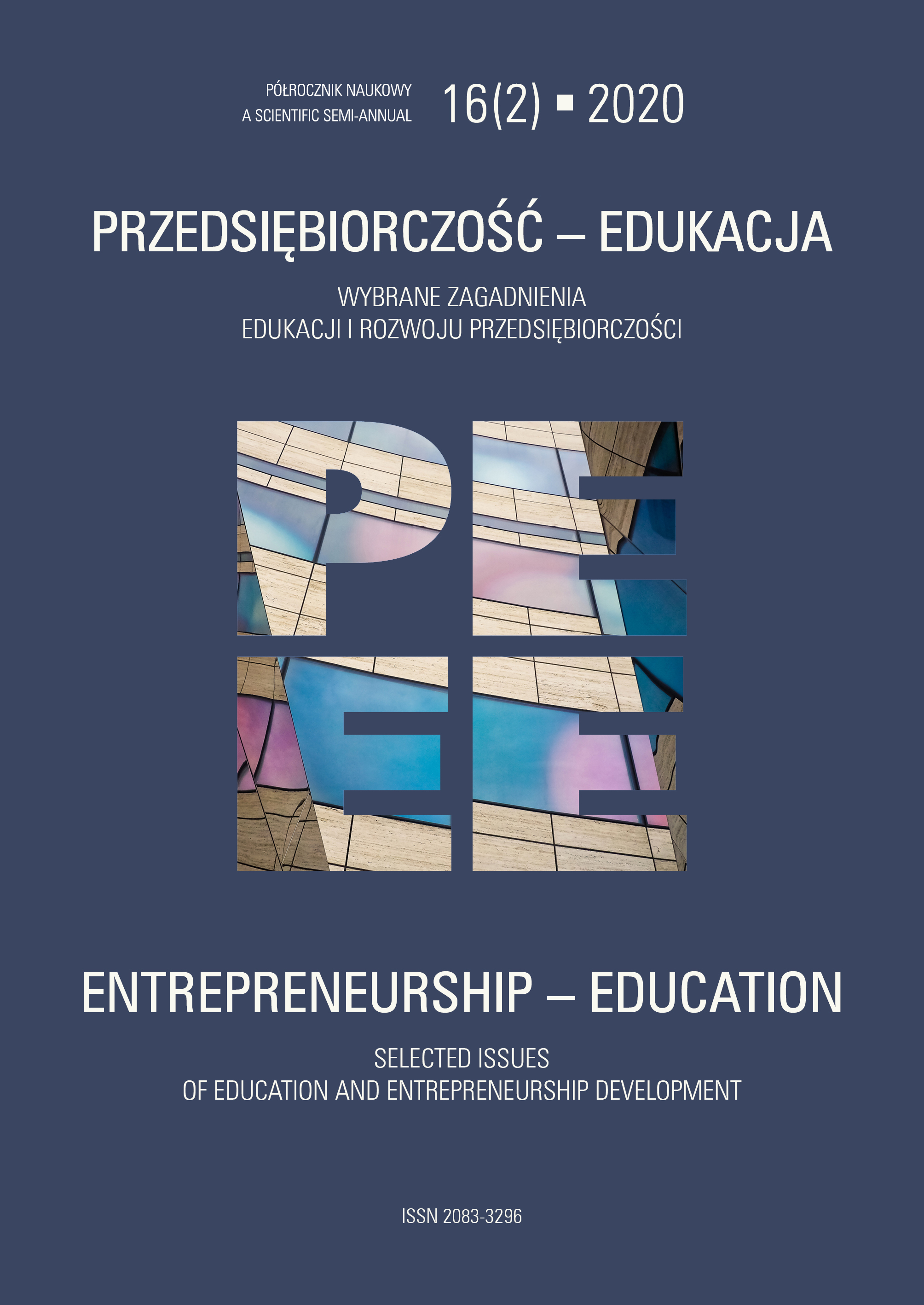Entrepreneurship in Slum Dwellers: Social Inclusion and the ‘Right to a City’
DOI:
https://doi.org/10.24917/20833296.162.25Słowa kluczowe:
cities, creativity, entrepreneurship., poverty, slums, urbanisation, urban studies, the Third WorldAbstrakt
According to UN data, the global urbanisation rate is currently 55%, and in 2050 it is expected to reach 68%. The leading causes of urban population growth are economic development and polarisation, agricultural change, political instability, climate change and population growth. Additionally, in many countries local authorities are unable to provide adequate living conditions for the newcomers. The scale of the phenomenon of informal urbanism and slums has been known for decades and is still high. Slum dwellers face many barriers on their way to improving living conditions and top-down attempts to improve them have proved ineffective, e.g. mass social housing, the fight against crime. The paradigm of treating slum dwellers, however, as low-skilled, demoralised, deprived of all kinds of capital and any sign of entrepreneurship is changing. The paradigm shift in aid to slum dwellers is based on bottom-up stimulation of their entrepreneurial attitudes, social inclusion and activation. The article has two main objectives, the first one - descriptive and cognitive - to develop a background and geographical synthesis of information on the phenomenon of global slum formation based on the most recent data. The second objective is an attempt to demonstrate the legitimacy of changing the approach and activating the entrepreneurship of slum dwellers.
Bibliografia
Angotti, T. (2006). Apocalyptic anti urbanism: Mike Davis and his planet of slums. International Journal of Urban and Regional Research, 30(4), 961–967.
Davis, M. (2006). Planet of slums. London: Verso.
De la Jara, A. (2018; 2029, 10 November). Slums on the rise in Chile. Reuters. Retrieved from: https://www.reuters.com/article/us-chile-migrants/slums-on-the-rise-in-chile-idUSKCN1OP1DJ
Censo Demográfico 2010. Aglomerados subnormais:Primeiros resultados. (2011). Rio de Janeiro: IBGE, 201, 1.
Driedger, L. (1991). The Urban Factor. New York: Oxford University Press.
Friesen, J., Taubenböck, H., Wurm, M., Pelz, F.P. (2019). Size distributions of slums across the globe using different data and classification methods. European Journal of Remote Sensing, 52(2), 99–111. doi: 10.1080/22797254.2019.1579617
Gregory, D., Johnston, R., Pratt, G., Watts, M., Whatmore, S. (2009). The Dictionary of Human Geography. Now York: Wiley-Blackwell.
Gutowska, A. (2015). Going beyond poverty tourism? The narratives of Kibera residents and their meanings constructed within the frame of slum tours. Folia Turistica, 37, 85–99.
Habitat for Humanity Great Britan. (2017; 2019, 10 November). Retrieved from: https://www.habitatforhumanity.org.uk/blog/2017/12/the-worlds-largest-slums-dharavi-kibera-khayelitsha-neza/
Harvey, D. (2012). Bunt miast. Prawo do miasta i miejska rewolucja. Warszawa: Fundacja Bęc Zmiana.
Kenyan fashionista dares to stand out in Kibera slum. (2017; 2019, 10 November). Retrieved from: https://www.bbc.com/news/world-africa-40012435.
Driedger, L. (1991). Czynnik miejski, Nowy Jork: Oxford University Press.
Ma, B. (2010; 2019, 10 November). A Trip into the Controversy: A Study of SlumTourism Travel Motivations. University of Pennsylvania Scholarly Commons Undergraduate Humanities. Retrieved from: http://repository.upenn.edu/cgi/viewcontent.cgi?article=1011&context=uhf_2010
McGuirk, J. (2015). Radykalne miasta. Przez Amerykę Łacińską w poszukiwaniu nowej architektury. Warszawa: Fundacja Bęc Zmiana.
Najbardziej zanieczyszczone miasta świata. (2019, 15 October). Retrieved from: http://wgospodarce.pl/informacje/60828-oto-najbardziej-zanieczyszczone-miasta-swiata
Schirato. S. (2018). Wakaliwood: The cinematic dream of a Uganda slum. Retrieved from: https://www.aljazeera.com/indepth/inpictures/wakaliwood-cinematic-dream-uganda-slum-180305080922395.html
Small, J., Ross, S., Witherick, M. (2001). A Modern Dictionary of Geography. London: Arnold.
Tupac Amaru. (2019, 15 October). Retrieved from: https://www.welcometothecantri.com/en/la-tupac-amaru/
Understanding Slums: Case Studies for the Global Report on Human Settlements 2003. (2019, 15 October). Retrieved from: https://www.ucl.ac.uk/dpu-projects/Global_Report/home.htm
Venema, V. (2015). Uganda’s Tarantino and his $200 action movies. Retrieved from: https://www.bbc.com/news/magazine-32531558
Vradley, J. (2011; 2019, 15 October). In One Slum, Misery, Work, Politics and Hope. NY Times. Retrieved from: https://www.nytimes.com/2011/12/29/world/asia/in-indian-slum-misery-work-politicsand-hope.html
UN-Habitat. (2016). Urbanization and Development: Emerging Futures. World Cities Report 2016. UNHabitat.
Werner, K. (2017; 2019, 15 October). Milionowy slums i turystyka slumsowa, czyli – chodź pooglądajmy sobie biedę! Retrieved from: https://kolemsietoczy.pl/milionowy-slums-w-mumbaju-i-turystyka-slumsowa-czyli-chodz-poogladamy-sobie-biede/
Pobrania
Opublikowane
Jak cytować
Numer
Dział
Licencja
Artykuły publikowane są zgodnie z warunkami licencji Creative Commons (CC BY-ND 4.0; uznanie autorstwa-bez utworów zależnych).

